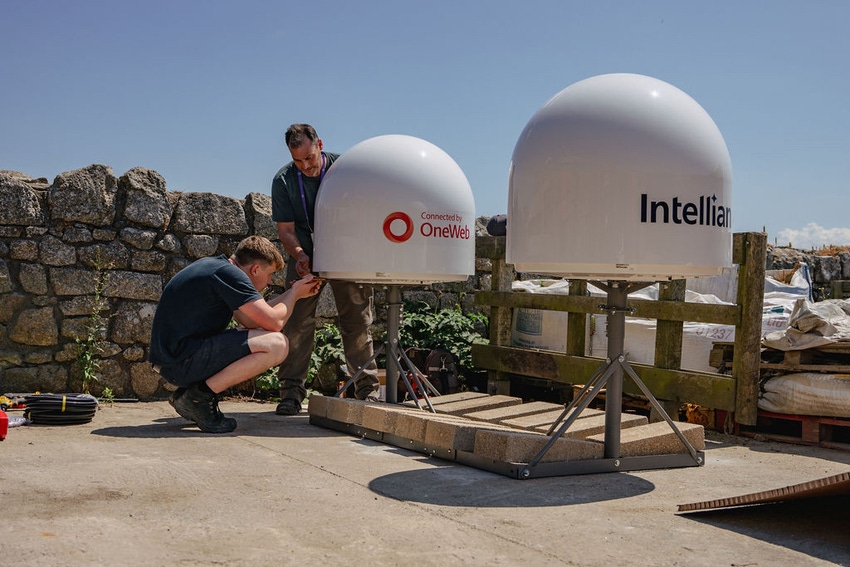BT and OneWeb hook up remote island to internet via satellite
The island of Lundy can now enjoy decent internet, as UK telco group BT and satellite firm OneWeb complete their ‘first real-world example’ of how remote areas can be connected via LEO satellite.
July 21, 2023

The island of Lundy can now enjoy decent internet, as UK telco group BT and satellite firm OneWeb complete their ‘first real-world example’ of how remote areas can be connected via LEO satellite.
The island of Lundy is 19 kilometres off the coast of North Devon, and apparently its 28 permanent residents and 21,000 seabirds haven’t had reliable internet before now.
In terms of how it works, connectivity is delivered via installation of an Intellian outdoor satellite antenna system on the island, which connects to OneWeb’s constellation of 630 LEO satellites in orbit, and an indoor satellite modem provides two-way data connectivity.
The connection then travels (get ready for some acronyms) from User Terminal (UT) to Satellite Network Portal (SNP) via the LEO satellites, where it is backhauled across OneWeb’s Wide Area Network to handover to one of BT’s points of presence (PoP) in London. From there, traffic is routed back into the internet or delivered into BT’s 21C core network. So now you know how that works.
“It’s brilliant to be bringing high-speed, low-latency connectivity to Lundy Island in partnership with OneWeb and DSIT,” said Greg McCall, Chief Networks Officer, BT Group. “The installation will not only have a transformative impact on the island and its residents, but is also a significant milestone in demonstrating the value of satellite communications and the crucial role such solutions will play in enabling digital connectivity across the entirety of the UK and beyond.”
Rosemary Ellis, who has the title of Warden of Lundy Island, said: “The connectivity provided by BT and OneWeb is already delivering fantastic benefits, speeding up frustrating jobs that used to take hours. For example, I was able to upload an hour-long talk on our conservation success stories in just a few minutes, when it had previously failed to send multiple times. This frees me up to get out of the office to focus on surveying our wildlife, and I can much more easily engage with researchers and students. As a resident of the island, Coastguard Rescue officer and Community First Responder, it also gives me peace of mind that if we need any mainland medical advice, we can easily video-call from the village.”
As well as providing broadband connectivity to out of the way places like Lundy, the two firms say they are trialling ways of enhancing mobile connectivity via satellite, and have completed a live field trial transmission of 4G data using an LEO satellite link.
Using LEO satellites to provide broadband in areas that aren’t or can’t be served well by terrestrial infrastructure remains a solid use case for the satellite comms sector on a technical level – though the business model of deploying things like at scale this seem less obvious, presuming there isn’t some massive premium for the relatively small number of people using the service.
The answer in this case may be that the project is part of the UK Government’s Alpha Trials programme. Sir John Whittingdale MP, Minister for Data and Digital Infrastructure said:
“This is yet another example of brilliant British ingenuity being brought to bear on our commitment to deliver a digital revolution in all parts of the country. Our Alpha Trials programme is bringing high-speed connectivity to some of our hardest to reach places, from Papa Stour in the Shetland Islands to Lundy. Working with OneWeb and BT, the island will now have access to high-speed, reliable connectivity delivered by satellite which will not only unlock new opportunities for residents, but also support ongoing conservation efforts.”
Presumably that all means funding of some sort, which would answer the question of who pays for it.
Get the latest news straight to your inbox. Register for the Telecoms.com newsletter here.
About the Author(s)
You May Also Like











_1.jpg?width=300&auto=webp&quality=80&disable=upscale)


.png?width=800&auto=webp&quality=80&disable=upscale)